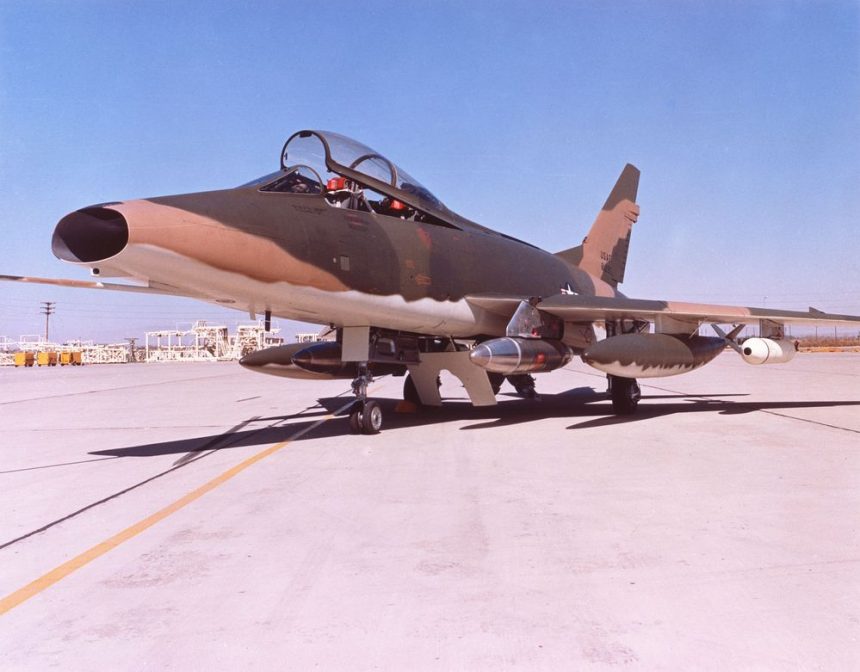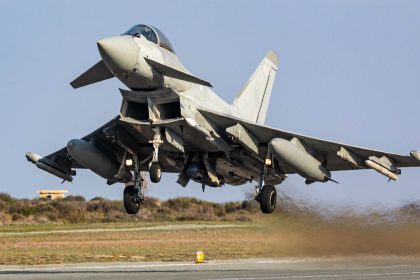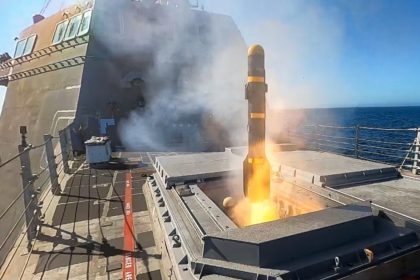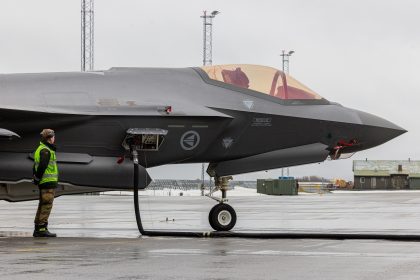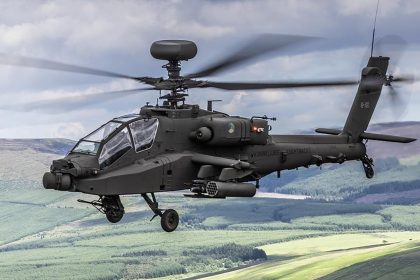In addition to being the first of the so called “Century Series” fighters and the first U.S. Air Force plane able to reach supersonic speed in level flight, the North American F-100 Super Sabre was also the first of the Wild Weasel aircraft.
The concept around Wild Weasels (aircraft specialized in Suppression of Enemy Air Defenses missions) dates back to Jul. 24, 1965, when an Air Force F-4C Phantom was shot down over North Vietnam by a Soviet made SA-2 Guideline Surface to Air Missile: a proof that the SAMs (Surface to Air Missiles) were a real threat for U.S. aircraft, and something that had to be coped with in the shortest time possible.
The first idea relied on the traditional methods of photo and electronic reconnaissance (after the SAM site was located, aircraft on alert would be launched to destroy it). But such an approach was neither timely nor effective since many sites were mobile.
Therefore, a small number of aircraft were equipped with electronic devices to locate and mark the SAM sites in real-time for strike aircraft. This method required those aircraft to be fitted with a Radar Homing and Warning (RHAW) device allowing them to know when they were being targeted. The second step was to load these aircraft with missiles, like the AGM-45 Shrike, that could be fired at the radar. The last step was providing more effective jamming to protect themselves.
Due to its availability and performance, the two seat version of the Super Sabre, the F-100F, was chosen as the pathfinder aircraft: these aircraft had the task to locate and mark the SAM sites. Their RHAW was fitted with the IR-133 Panoramic Scan Receiver made by Applied Technologies Inc. (the so called ATI equipment), which provided a 360 degree scan on a 3-inch Cathode Ray Tube cockpit display to provide bearing to the signal: moreover it differentiated the various frequency bands and pulse rates to identify the several types of radar signals received, such as surveillance, missile tracking and Anti Aircraft Artillery (AAA) radar.
The aim of these kind of missions were explained to the aircrews during several briefings and it was in one of these meetings that an F-100F Electronics Warfare Officer (EWO), the F-100’s back seater, said: “You want me to ride in the back of a two seat fighter with a teenage killer in the front seat? You Gotta Be Shitting Me!” and from that briefing is believed to come the original Wild Weasel slogan “YGBSM” as explained in Ted Spitzmiller’s book Century Series The USAF Quest for air supremacy 1950-1960 .
After the visual identification of the target, the Pathfinder had to mark it, by means of 2.75 inch air to ground rockets fired from LAU-3 launchers, for the F-105 Thundechiefs that followed the F-100 with the task to destroy the SAM site.
Often, the SA-2 was launched against the F-100F: to avoid the missile, the Super Sabre aircrew relied on the Launch Warning Receiver (LWR-300) which, with a yellow light in the cockpit, alerted the crew of the imminent launch and with a red light signaled that the missile launch had occurred. A former pathfinder pilot, Colonel Edward Rock in the book First In, Last Out explained that he never noticed the color of the light: “If a SAM was launched, then the azimuth strobe associated with the threat was supposed to blink at 3 cycles per second. I can say that I probably had more than 100 missiles launched at my aircraft and never, not even once, saw the strobe blinking. Probably busy with more important things like saving my life.”
The first Wild Weasel F-100Fs arrived at Korat Royal Thai Air Force Base in November 1965. They conducted their first successful mission on Dec. 22 1965, as recalled by another Super Sabre pilot, Lieutenant Colonel Allen Lamb who gave his account to Ted Spitzmiller: “We didn’t just mark the target…we went in first with rockets and came back around with cannons even before some of the Thuds (as it was called the F-105 Thunderchief) had started on a first run. The F-100F was an excellent hunter-killer in that it was very agile. I was very fond of it, and of my ability to fly it.”
The F-100F flew these missions until its replacement with the F-105F, which took place in July 1966. However the “Hun” (as the Super Sabre was dubbed by its aircrews) was the first Wild Weasel aircraft and the first fighter to fly in the risky environment of the anti SAM missions, as remembered by Rock: “Due to the limited number of Wild Weasel aircraft we were considered a high value limited asset…we normally flew only the most dangerous missions and in an area where the threat was the very highest.”

